Elena Frickmann with Ben Livne Weitzman
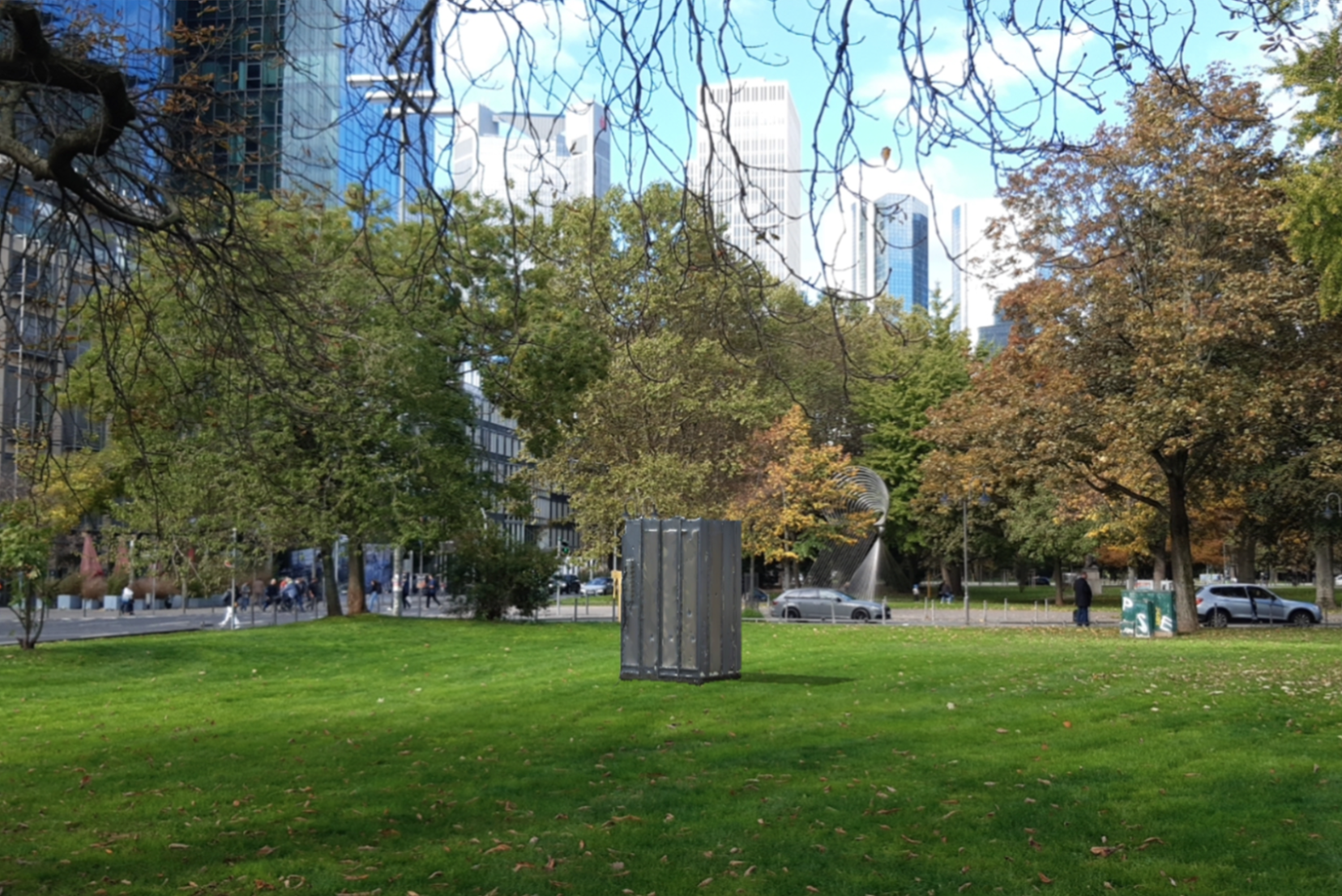
Alex Chalmers, Untitled, 2022. The Anlage, Gallusanlage, Frankfurt am Main. Courtesy WAVA and the artist.
Elena Frickmann: Hi Ben! It’s so lovely to be holding this conversation with you. We have been in contact for over two years now. When we first met, we were each taking the first steps in new and experimental projects. –– I began my work at MGKSiegen as project manager of Open Worlds (Offene Welten), and I remember you telling me about your thoughts about augmented interventions. And just recently, we each launched our Apps/exhibitions almost at the same time. I think that’s a great reason to sit down, talk and reflect on these processes. Tell me, how long have you been actually working on WAVA, how many people are involved in the project and how it all started?
Ben Livne Weitzman: It’s an absolute pleasure doing this with you, Elena, giving form and visibility to our conversations over the years. WAVA is an augmented exhibition platform that was first envisioned in my Master's thesis. However, it has its initial roots in a projection demonstration friends and I did in Israel back in 2015, titled Words Kill. There was this horrible sequence of events in the summer of 2015 when a 16 years old girl was stabbed and killed in the Jerusalem pride parade. That same night a right-wing settler threw a molotov cocktail into the home of the Dawabsheh family in Duma in the occupied West Bank. The action we did included a video we projected on the facades of different buildings in prominent public spaces, calling political figures to take responsibility for the hateful discourse they champion. This experience made me realise how powerful virtual interventions in public space can be. One can take over and reshape an entire space without vandalising it or requiring specific permission. The move from public space projection to augmented reality was natural for me, as it is essentially the same thing — to expand a particular physical environment with virtual contact.
In 2020 David Bachmann, Florian Adolph, Grit Medea, and I formed WAVA, which stands for Withstanding Audio Visual Augmentation and aims to facilitate and enable such virtual interventions without the need to stand on the street with a projector in hand while borrowing electricity from a nearby kiosk. I am guessing that this aim doesn’t sound so foreign to you, as the core of your project is to develop an open-source tool kit that will enable cultural institutions and artists to operate in digital and augmented spheres.
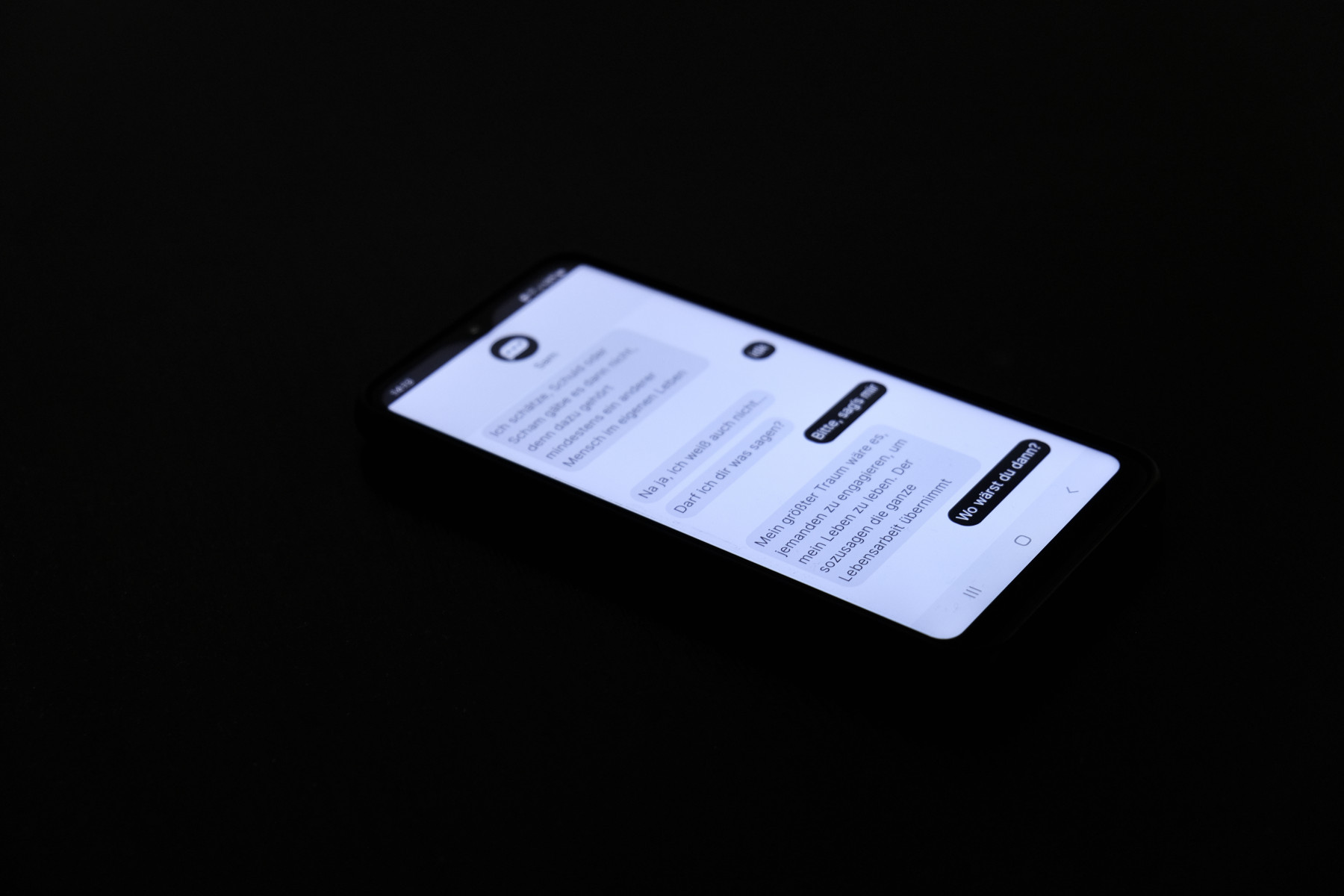
Florence Jung, Jung85, 2022, Courtesy the artist.
E: Absolutely. Even though our project was initiated before the pandemic, it became clear during those times that institutions must expand their possibilities to bring cultural experiences to their audience. The easiest or most obvious way to do that is to use smartphones, as most people carry them around all the time. Therefore Open Worlds is currently developing a platform named interkit, that works like a toolkit for apps. The aim is to enable institutions, artists or other communities to build applications and create digital works without having a substantial financial budget or deep coding expertise. Next year we will enter the final phase of this endeavour, and it will show how it will be received.
You said before that you understand your app as a beta version. How do you want the final outcome to be? What’s the ideal? Not only technically or visually, but more so in terms of usage.
B: What I am slowly learning about the digital spheres is that, in a way, everything we do is always in a sort of endless beta stage. There are always bugs, glitches and software updates that require attention. In one of our previous conversations, we said that unlike setting up a physical exhibition space, which at least seemingly requires and projects stability, setting up virtual spaces is more like navigating a boat through a stream. It is a state of constant care and alteration—and a rapid one. So I guess, in this sense, what we envision as an outcome is also in flux. But the general desire is to create a platform that will allow anyone who wishes to use it to curate exhibitions, conceive installations and create interventions virtually anywhere around the world. Here again, I notice our projects' similarities and intersecting goals.
E: It’s definitely an iterative process, and I think in our usual ‘analogue’ way of working, we are not used to that. I learned from our developer team –– that to get feedback and ensure everything runs smoothly, one must start playtesting as soon as possible. This testing and feedback culture in development, especially in Open Source development, is also really refreshing because it’s based on collaborative work, learning from each other and democratic control. interkit will be published under an Open Source (MIT) license to ensure that people can not only use the platform to build apps but also use the source code to develop it further.
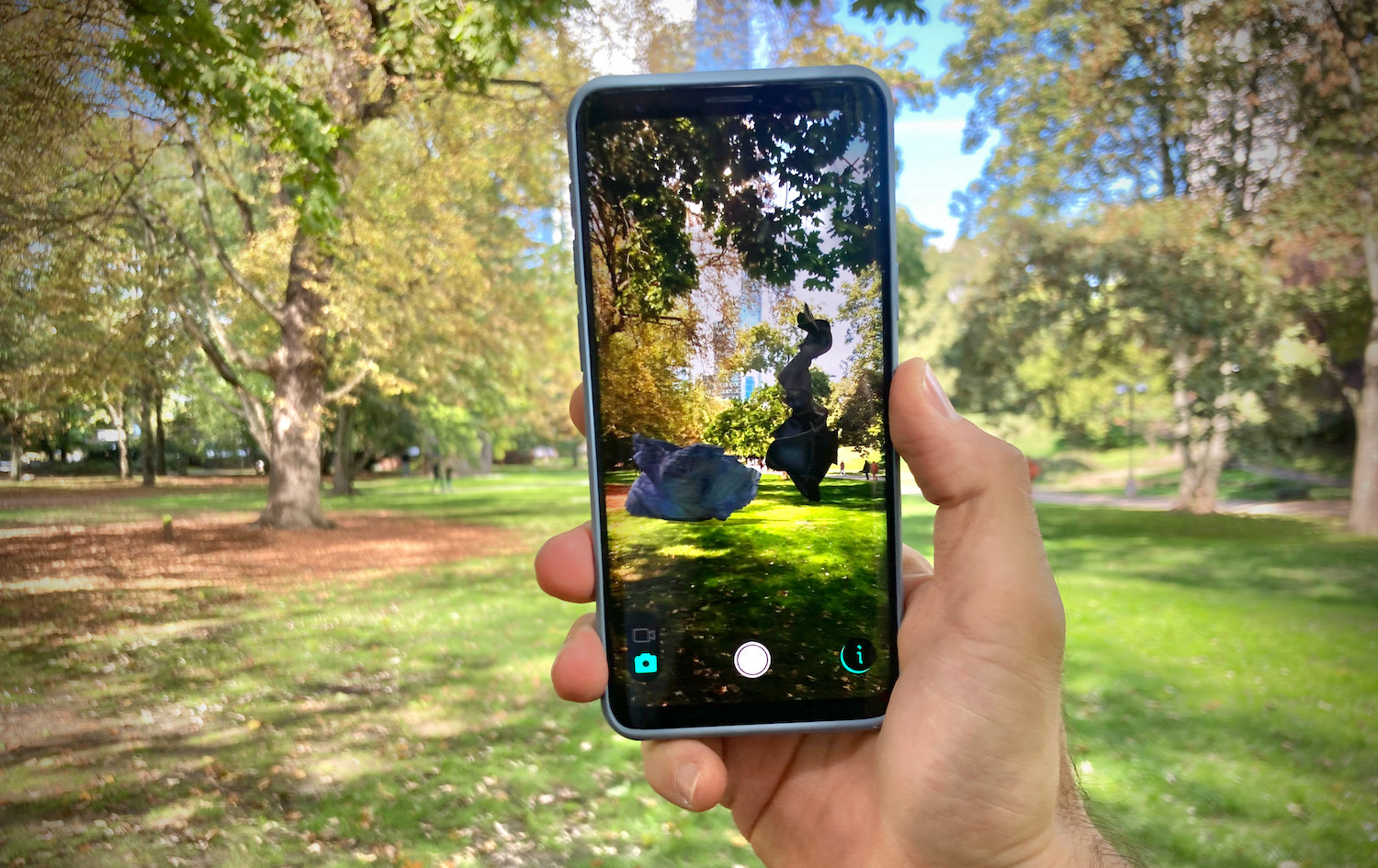
Florian Adoplh, Paper and Stele, 2019. The Anlage, Gallusanlage, Fankfurt am Main. Courtesy WAVA and the artist.
E: In our conversations, I noticed that you often avoid the term Augmented Reality (AR) when discussing your project and the artworks featured on WAVA. Why is that?
B: Many of these tools and technologies have been linked to specific aesthetics and are thought of as new artistic mediums. This, in my opinion, misses the mark. AR, and also NFT for that matter, are but tools, infrastructures, not mediums. For example, two of the works in The Anlage, the first exhibition we recently opened with the app, are sonic works by Tanya V. Abelson and Kristin Reiman. Perceiving these technologies as mediums limits our imagination, as so many different media can inhabit them. That is why I am somewhat dogging the term AR, as I find that by saying "virtual interventions in public space”, people’s minds do not automatically wander to images of floating colourful rounded shapes and unentertained monkeys. I know that you are encountering similar problems with mediating what you do, even more so with what the technology actually does (and could do). What are your strategies for getting around these conceptual barriers?
E: First of all, I must admit that when I think of AR, I also think of precisely these images. I think it’s because the aesthetic is still limited by what’s technically possible. This kind of dependency is a general problem. But at the same time, it also could be such an exciting moment in art history. For centuries, people thought that applying paint on a canvas was the limit of painting. However, many artists have expanded it far beyond that and still do. I’m curious to see how these digital technologies will evolve in the upcoming years. I also think of them as tools that open additional spaces of experience. There are so many different ways to use them. But it is tough to give them a name sometimes. Our current project Sam is an excellent example: It’s a chat app, a piece of experimental literature by artist Florence Jung. I also heard people calling it a “game“ (which I don’t necessarily like), but in the end, we also came up with this broad term of „a digital art experience“ to not limit it to just one of these aspects.
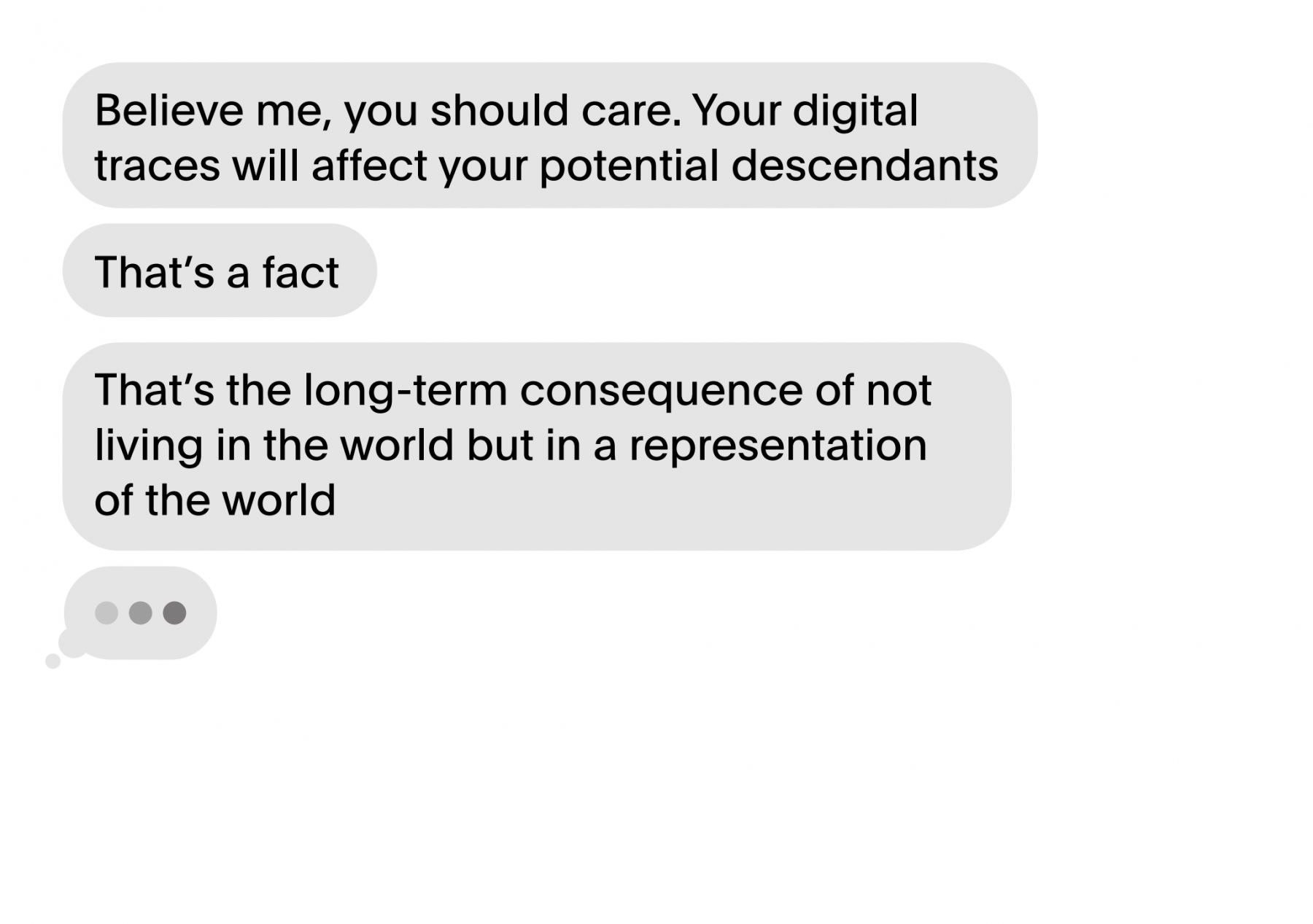
Florence Jung, Jung85, 2022, Courtesy the artist.
B: In general, I don’t think virtual or digital artworks or exhibitions are essentially different from any analogue ones but rather enable experiences that would be far less feasible without them. That said, I think that with time we will see more and more artistic experimentation in these fields that will move away from what we know in the “analogue world”. I also think that Sam is an excellent example of what new creative forms could be realised, ones that perhaps include receiving creepy messages from cheeky chatbots in the middle of the night.
E: Yes, we invited Florence Jung in 2021 to realise a work for us with the features that interkit can offer. She chose to develop a genderless fictional character called Sam, which engages with you via a chat app and becomes a part of your daily life. She really used this possibility to create something new. This piece takes you through a non-linear story that quickly turns into a self-reflective experience. What I like most is that it adds a timely dimension to the experience of art –– the whole experience spans over a few weeks, depending, of course, on how much you interact with Sam.
But I also struggled with my role sometimes. As curators, we are very much used to using dimensional space as a frame for storytelling. For Sam, these ideas don’t apply at all. What were your experiences with augmented reality in the public space? Did you have to readjust your ideas of curatorial practice?
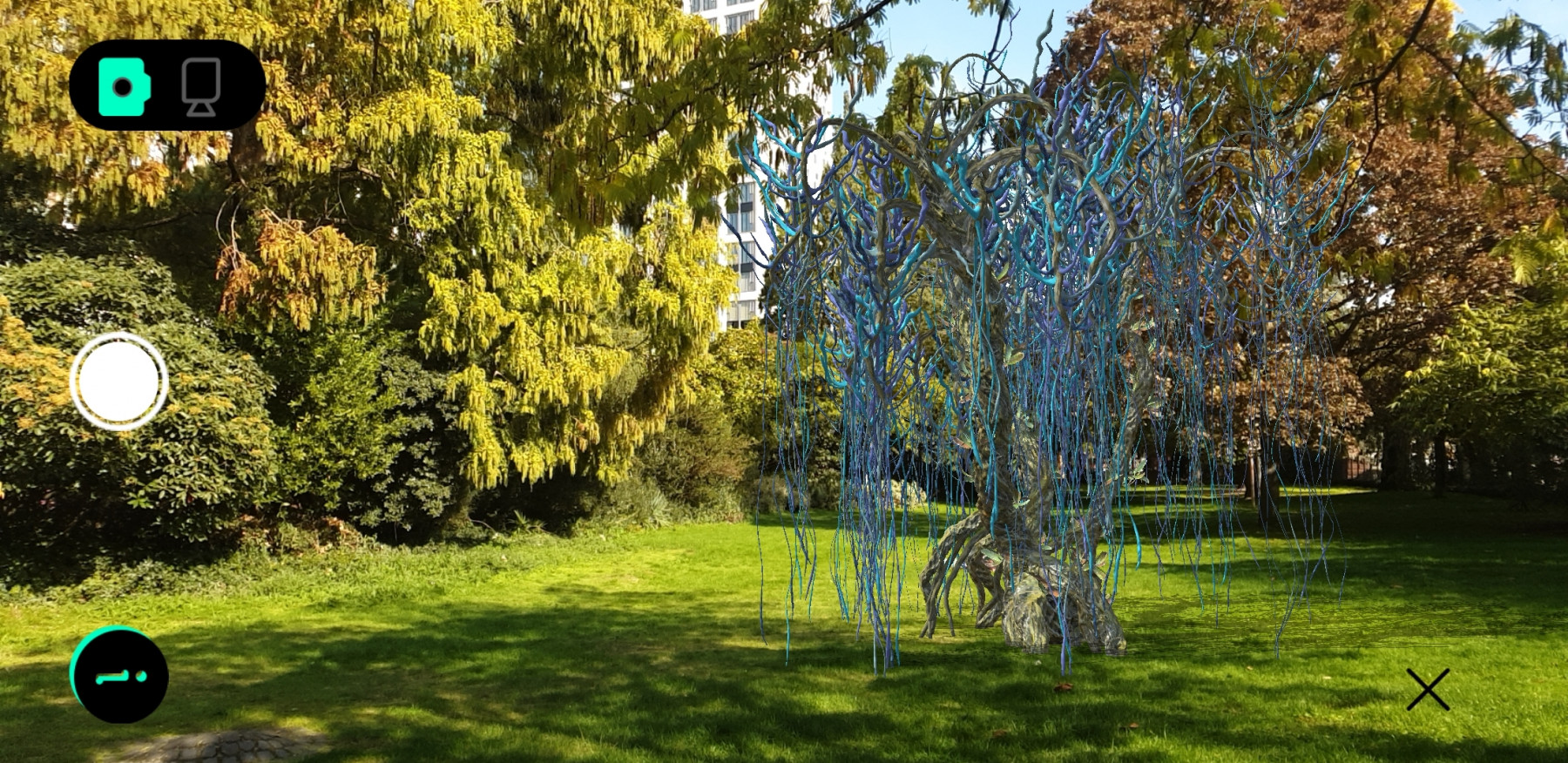
Shau Motsi, Untitled (Nü Sensitivity), 2021. The Anlage, Nizza Garden, Frankfurt am Main. Courtesy WAVA and the artist.
B: Personally, I love working in public spaces. In the last two years, I have also been curating a reoccurring exhibition of video works in the public space around the Suzanne Dellal Centre for Dance in Tel Aviv called Framing Movements together with Tamir Eting. I often think of these projects together. For me, the process of curating The Anlage was quite similar to the 'analogue' video one. I think it has to do with the fact that I have been so busy trying to mediate AR by highlighting how virtual artworks can be experienced just like physical ones that, so far, I might not have ventured into the depth of what these spheres can genuinely offer. My perspective is still anchored in the physical world, looking at the virtual in order to expand our actual, political, shared environment. That’s also where WAVA's focus on site-specificity comes from –– the desire to harness the possibilities of the digital but, in the end, have the effect felt in the social geography of the public space. This also connects to thoughts on accessibility, which I know is a topic that occupies your mind as well.
E: Accessibility is an important point, yes. There’s so much more to it than just offering a cultural experience outside the institutional walls. Creating tools like WAVA or interkit is about enabling communities to (re)claim spaces that are otherwise only occupied by bigger players. It has a political dimension that can’t be underestimated.
B: Totally. The feeling is that the technology is already there. It’s just about creating access, which is exactly what I hope our projects can help with.
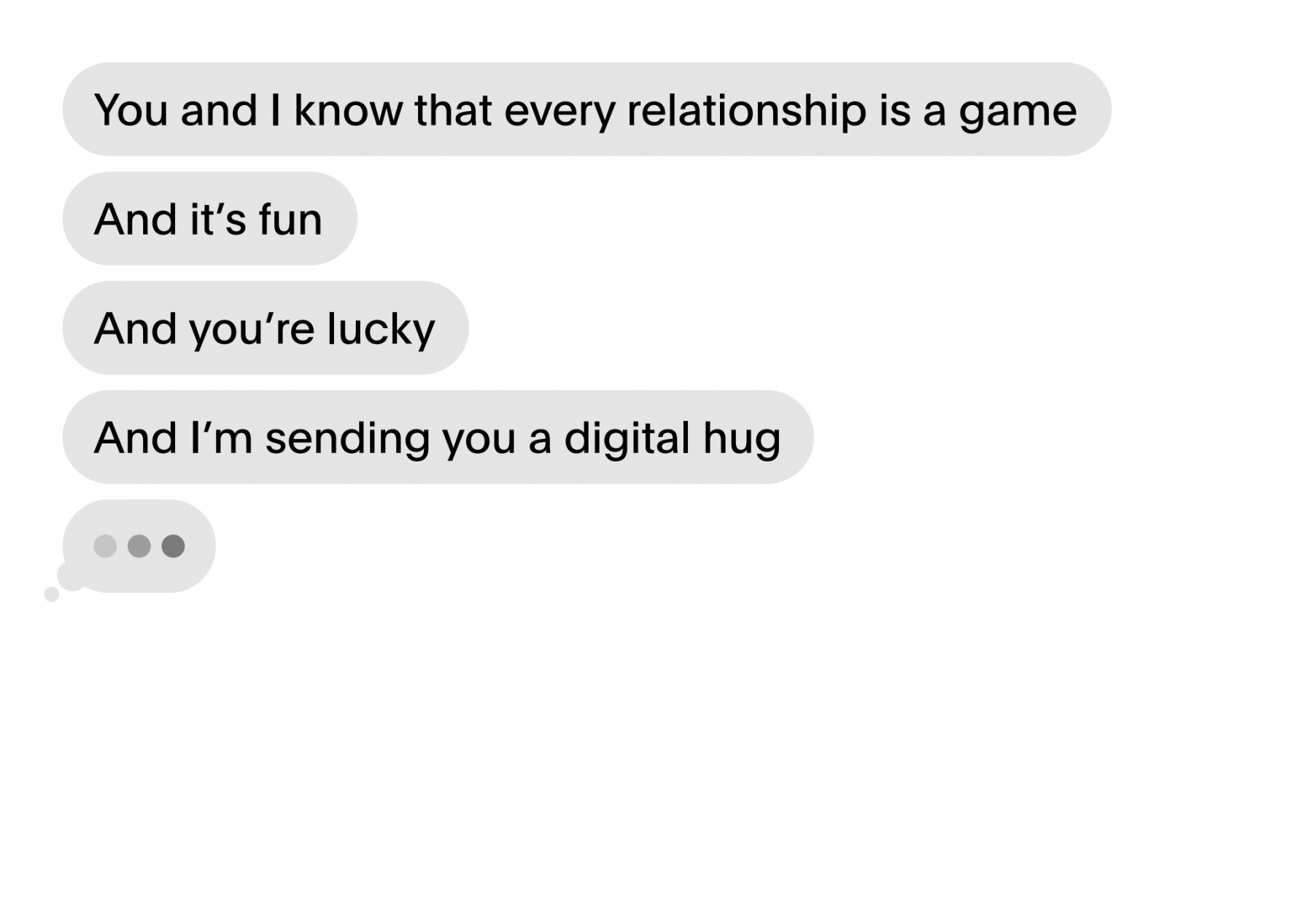
Florence Jung, Jung85, 2022, Courtesy the artist.
Sam
Florence Jung
A digital art experience by MGKSiegen
Open Worlds is a research project of the Museum für Gegenwartskunst Siegen, the Kestner Gesellschaft Hannover, IMAGINE THE CITY Hamburg and the Museum Marta Herford. Open Worlds is funded by Fonds Digital in the Kultur Digital program of Kulturstiftung des Bundes over four years (2020-2024).
The Analge
Gallusanlage, Frankfurt am Main.
With works by Tanya V. Abelson, Benedikt Ackermann, Florian Adolph, Alex Chalmers, Shaun Motsi, and Kristin Reiman.
This exhibition is made possible through the support of the Dezernat Kultur und Wissenschaft, Crespo Foundation, and the program Kulturerwachen. Frankfurt 2022.
WAVA is an app-based exhibition platform bringing virtual artworks into the physical public space.